Sharlyn J. Lauby's Blog, page 53
June 2, 2022
HR Professionals: Growing Your Audience Matters
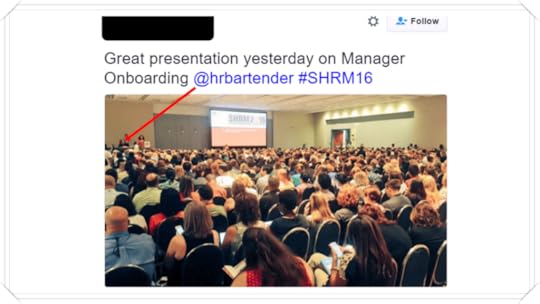
When it comes to learning, I’m a big believer that we seek out opportunities to listen/read/do things that don’t always fit into the mold of our current role. Years ago, when I worked at an airline, I was assigned to a task force responsible for researching what happened to luggage when it went missing. It was interesting and I learned a lot, in addition to helping the organization solve a vexing problem.
Which is why I wanted to share with you the book “Reach: Create the Biggest Possible Audience for Your Message, Book or Cause” by Becky Robinson. Becky is a friend, and I was thrilled that she sent me one of the first copies. The focus of this book is exactly what the title says. It’s about building and growing an audience.
This is important to HR. Here’s why.
[image error]Recruiting and Recruitment Marketing. As I was reading the book, I kept saying to myself…this would be great for recruiters! Oh, and this would be perfect for recruitment marketing campaigns and employment branding. If you’re building a talent pool or a talent bank, then knowing how to grow an audience is important. For example, finding ways to use social media to broadcast regular messaging about the company. And when you’re busy, strategies for quickly updating and repurposing content would be very helpful.
Marketing Your Consulting Business. Over the past few years, a growing number of people have decided to venture into the consulting world. That’s great. I love consulting. I have great clients and get to work on interesting projects. But I also have to market my work. “Reach” allows new entrepreneurs to start building their audience. Established consultants will find some valuable reminders and maybe even some new marketing strategies.
Volunteerism and Activism. Corporate social responsibility (CSR) is part of the Society for Human Resource Management (SHRM) HR competency model. We’ve talked in the past about how candidates, employees, and customers want to know that organizations support their values. I could see it being important for HR to communicate the company’s position on issues to their audience. I could also see the company asking their audience (i.e., customers and employees) for support as well.
To me, “Reach” is one of those books that can offer some creative inspiration in many different situations. I think that’s great and so applicable right now. We need resources that can be as flexible as we’re being asked to be. If you’re looking for a book that can give you some communication and messaging ideas, check “Reach” out.
Sometimes, the best resources come from experts outside of our industry. That doesn’t mean to abandon HR resources. It means we should be open to using a variety of resources to make our HR strategies stronger.
Image of Sharlyn Lauby speaking at SHRM Annual Conference in Washington, DC
The post HR Professionals: Growing Your Audience Matters appeared first on hr bartender.





May 31, 2022
Labor Law Postings: 4 Key Components of a Successful Strategy #MindTheGap

Estimated reading time: 4 minutes
In this #MindTheGap series, we’ve been talking about labor law postings and the requirements that employers might overlook. For example:
“3 Employee Groups with Unique Labor Law Posting Requirements” include remote workers, applicants, and Spanish language posters.
While there are six federal labor law posters that most businesses are required to post, “Different Industries Require Difference Labor Law Postings” reminded us that employers still have state and local postings to monitor. In addition, government contractors might have additional posting requirements.
And as more organizations are planning for a post-pandemic workplace, my interview with Ashley Kaplan, senior employment law attorney for HRdirect, provided insights on “Labor Law Posting Requirements for Hybrid and Remote Work”.
Compliance is a key part of our HR responsibilities so we should have a strategy to manage it. That way it doesn’t consume much of our time. It shifts our focus from being reactive to proactive. So, to wrap up this “Mind the Gap” series, let’s discuss four key components for a successful labor law posting strategy.
Determine the purpose. The purpose of labor law postings is to inform employees of their legal rights and responsibilities under federal, state, and local regulations. Employers that are only focused on federal and state postings aren’t doing enough. For example, did you know that cities like Denver, Miami Beach, New York, and Tucson all require anti-discrimination postings? They do.Labor law postings aren’t some dreamt up form of punishment. They provide education to employees. That shows employees the organization cares about their wellbeing, which attributes to employee engagement and retention. Employers shouldn’t dismiss how little acts that demonstrate caring through employee education can provide value. Organizations should treat labor law posters as such.
Communicate to everyone. I’d like to believe it’s obvious that if you’re a multi-location employer, you need multiple sets of posters. But also think about if you have a single, large location. Is there someplace that you can guarantee every employee will walk by and see all the required postings? And what about remote workers? Think about #1. The purpose of labor law postings is to educate employees, which means they need to see them.When it comes to employee communication, displaying only one set of posters may not be probably isn’t won’t be enough. Employers will want to be strategic about posting locations. Look for places where employees hang out so the company is ensured they can be viewed by employees throughout the workday.
This ties into #1 and #2. Not only do organizations want to make sure that everyone knows their legal rights, but they need to know them in a timely fashion. Telling an employee that their rights changed six months ago doesn’t send the message to employees that the organization cares about them or being compliant. And I’ll say what we all know that employees are thinking…if the company isn’t doing compliance activities like labor law postings, what other compliance requirements aren’t they following?
Use your time strategically. There are about 175 different government agencies nationwide that are responsible for more than 400 mandatory posters. Sure, you can monitor all of the relevant agencies for changes and request free posters. That takes time. A lot of time. I don’t know about you, but that’s not how I want to spend my time. If I must choose between spending an hour monitoring for free labor law posters and working on filling requisitions or coaching a manager on how to get better performance from an employee, I know which one I’ll be doing.Now of course, I get it. Those downloads from agencies are free. I don’t have anything against free. I like free. But there are some things that even when you can get them for free, it’s not worth paying for in terms of your time. You know what I’m saying. Be smart about how you spend your valuable time.
The good news is having a labor law posting compliance strategy doesn’t have to be complex. Organizations can partner with outside services that will handle the heavy lifting and let you know when changes occur. As you’re thinking about how you want to spend your time, it could make some business sense to think about where HR can create the most value for your organization.
The post Labor Law Postings: 4 Key Components of a Successful Strategy #MindTheGap appeared first on hr bartender.





May 26, 2022
We Can Create Positive Change Without Changing Company Culture
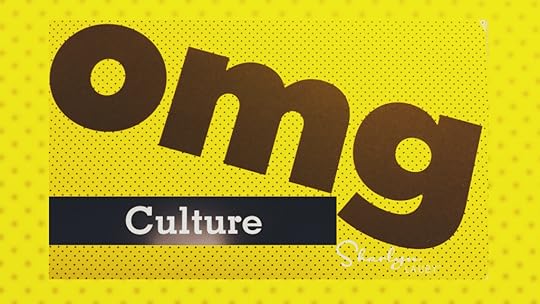
Estimated reading time: 3 minutes
One of the things I believe organizations are struggling with right now is planning. Over the past couple of years, organizations – and individuals – have made plans, changed plans, and maybe even abandoned plans. On some level, I can see organizations saying to themselves, “Let’s wait until we have more definite indicators about the future before we make or change any more plans.” I don’t blame them. Planning is a time and resource investment.
While there are a few plans we might not need or even want to make right now, there are a few we can make that will not disrupt what we’re currently doing. At this year’s SAP SuccessFactors virtual conference, President Jill Popelka spoke to the theme of “Changing Work for Good” and outlined three aspects of work that will drive our talent strategy into the future.
PURPOSE. We all know that employee engagement increases when employees feel a sense of purpose. This happens when employees know how their work benefits the organization and the community. This isn’t going to change in the future. In fact, Popelka talked about the workplace human experience becoming even more personal and purpose driven. Organizations have the opportunity now to think about how to give employees a sense of purpose that will drive when and where their people work.
BENEFITS. We’ve been seeing a shift in employee benefits over the past few years to an offering that’s more holistic. Employees will be looking for an employer that they can trust to offer benefits that are internally equitable and externally competitive. The good news is that organizations appear to be making the connection between benefits and productivity. And they are offering benefits packages that allow employees to take care of their whole self.
FLEXIBILITY. Another area where we’ve seen change is in employee work schedules and flexibility. Regardless of your views on remote and hybrid work, employees have been looking for flexibility for parenting, caregiving, attending school, and just relaxing and recharging. Popelka made the connection between the employee’s desire for flexibility and managers effectively supporting and coaching employees. In today’s business world, being a capable manager has never been more important.
What I really liked about these comments was the focus on the things we already know. We know employees need a sense of purpose. We know a comprehensive benefits package is necessary. And we know employees want flexibility. Second, we’re talking about aspects of work that we can plan for or change right now that will deliver huge returns in the future. Finally, none of these really involve changing the company culture. It’s more about getting the company’s talent strategy on track with employee needs and wants.
To me, that was the beauty of this conversation. I get it – there are things we can’t plan for right now. The world is still a little uncertain. But that doesn’t apply to everything. My takeaway from Popelka’s comments was that the thing we can – and should – be planning for are our employees.
Organizations that want to hire, engage, and retain the best talent need to have a talent strategy in place. They need to have a strategy in place now. Employees want to know that for all their hard work they will be paid fairly, be able to take off when they need to, and their efforts will be recognized. That’s not a ridiculous request. Employees wanted this before the pandemic, and they want it today. It’s time for organizations to step up and change work for good.
Image captured by Sharlyn Lauby while exploring the streets of San Francisco, CA
The post We Can Create Positive Change Without Changing Company Culture appeared first on hr bartender.





May 24, 2022
Strategic Compliance: Wage Garnishment Risk Avoidance

Estimated reading time: 6 minutes
(Editor’s Note: Today’s article is brought to you by our friends at ADP , a comprehensive global provider of cloud-based human capital management solutions. Industry analyst firm Nelson Hall recently identified ADP as a leader in both the small and medium business as well as mid to large market segments . Congrats to them! Enjoy the read.)
Some people might look at the title of today’s article and say, “Wage garnishments? That’s the payroll department. Not HR.” And you’re right. Payroll departments do handle the processing of wage garnishments.
But make no mistake, when employees have a question about their paycheck, including deductions like a wage garnishment, the first place they often go is HR. We need to know how to answer questions and support payroll processing. It’s never good when an employee’s paycheck is incorrect. Especially during a time when voluntary quits are at an all-time high.
Wage garnishments happen more often than you might thinkIn the ADP Research Institute white paper “The U.S. Wage Garnishment Landscape: Through the Lens of the Employer”, they report that one in 14 U.S. employees is subject to some form of wage garnishment. The most common type of garnishment is for child support (50%+). Tax levies is second at around 19% and bankruptcy orders are third at 5%. The report also indicated that the highest number of wage garnishments are employees between the ages of 35 and 54. This group also has the highest wage garnishment rate (approx. 10%).
The reason I want to talk about wage garnishments today is because I believe that remote and hybrid work is bringing a whole new level of complexity when it comes to processing garnishments. And that complexity often comes with risks for employers that could translate into penalties and interest or being liable for full amount of the garnishments if not done compliantly.
Organizations have employees working all over the place. Don’t get me wrong. That’s a good thing. But it means that HR and payroll departments have to think about all the different state laws where their employees are working. When it comes to processing wage garnishments, states have different laws in this area as well. So, there’s a potential increased risk of making a mistake managing wage garnishments.
Wage Garnishments: Different states have different lawsI wanted to gain some understanding of the different ways that states legislate wage garnishments. So, I spoke with Corri Flores, director of government affairs in ADP’s wage garnishments global money movement and compliance division. Corri shared three examples that highlighted where organizations need to focus their wage garnishment compliance efforts.
#1 – TIMING. Different states have different requirements when it comes to the deadline to remit payment after the paycheck deduction occurs. For example, in California, the employer must remit the payments withheld by the 15th of the next month after each payday or if the employer wishes to pay more frequently than monthly, each payment must be made within 10 days after the close of the pay period.
But if you’re processing a Kentucky garnishment, the employer is ordered to remit the payments after each pay period. And in Florida, the employer is required to withhold the payments from each paycheck, but then hold them until they receive an order to pay the amount (issued by the court). This can be a huge burden for the employer to withhold and sit with the payment for a period of time until the order to release the funds is received.
#2 – QUANTITY. There are variances in whether a state allows for multiple creditors’ garnishments against the employees’ wages. For example, Colorado only allows one creditor garnishment to be processed against an employee’s wages at a time. If an employer is already withholding on a creditor garnishment for an employee and receives a second one, they would not be able to set up the second creditor garnishment.
However, Georgia allows multiple creditor garnishments to be withheld from an employee’s wages up to the maximum allowable withholding limits. If a Georgia employer receives 4 creditor garnishments, all 4 could potentially be set up.
#3 – DEDUCTION LIMITS. The maximum amount withheld in an employee’s pay can vary by state. Oh, and federally as well.
Many states follow the federal guidelines of only allowing the creditor to garnish a weekly amount not to exceed the lesser of 25% of the employee’s disposable earnings, or the amount by which an employee’s disposable earnings are greater than 30 times the federal minimum wage (currently $7.25 an hour). Arkansas is one of the states that follows the federal maximum limitations on creditor garnishments.
However, some states allow for more of the wages to be protected from garnishments than what federal guidelines allow. Then, when there are variances between the federal protection and state, employers are instructed to use the law that results in the lower amount of earnings being garnished. Massachusetts passed legislation to protect more of the employee’s wages that can be garnished by a creditor to the lesser of 15% of employee’s gross wages per week or the amount by which an employee’s disposable earnings are greater than fifty (50) times the federal or state minimum wage (whichever is higher) per week.
The penalties for mishandled wage garnishments can add upWhen it comes to compliance, I know that some organizations take the view that “We’ll just pay the fine.”. As Corri and I were chatting about garnishments, I did ask about penalties. Corri shared the example that Illinois law allows “payors” to be penalized $100 per day if they knowingly fail to withhold child support within 7 days after the date the amount would have been paid. The total penalty amount for a payors failure to withhold per occasion may not exceed $10,000. Failing to pay on more than one occasions creates a presumption that the payor knowingly failed to pay.
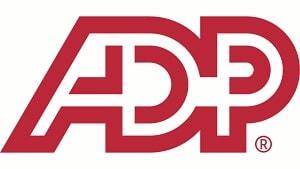
Besides the penalties, no organization wants to get the backlash of mishandling employee’s paychecks. Whether that’s from the employee because their garnishment was messed up or from federal or state government because it wasn’t handled according to the law.
Strategic compliance can help manage complexityRegular readers of HR Bartender know I believe that just because I can do something doesn’t always mean it’s the best use of my time. Wage garnishments are one of those things that fall into this category. Right now, organizations are looking for HR and payroll to focus on employee recruitment, engagement, and retention.
Yes, compliance still needs to be done. Employers must think about how they’re going to maintain compliance, including processing wage garnishments. But HR and payroll departments do not want to spend their time memorizing wage garnishment legislation in every state.
The good news is that with a strategic compliance strategy, technology can assist. And, having a strategic compliance partner – like ADP – can do that for you. Then, HR and payroll can spend their time answering employee questions and making sure that employees know their garnishments are being handled properly and legally. This is an opportunity to reduce risk and be more labor efficient.
P.S. If you want to learn more about creating a wage garnishment management process, I hope you’ll plan to join Corri and I for a webinar on “Transforming Wage Garnishment Compliance”. It’s scheduled for Tuesday, June 7, 2022, at 2p Eastern. The session has been preapproved for recertification credits by the Society for Human Resource Management (SHRM) and the Human Resource Certification Institute (HRCI). And as always, if you’re already booked that day, do sign up for the webinar so you can get the recording. Hope you can join us!
The post Strategic Compliance: Wage Garnishment Risk Avoidance appeared first on hr bartender.





May 22, 2022
Now Is a Good Time to Reevaluate HR Data and Metrics Protocols
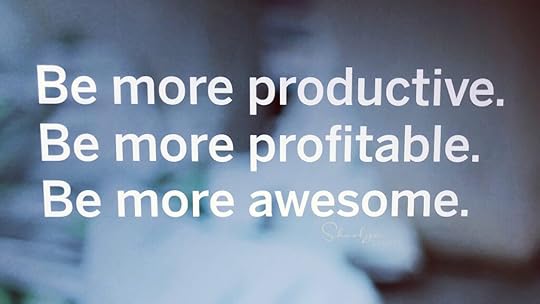
Estimated reading time: 4 minutes
This isn’t going to be one of those “seat at the table” or “talk the language of business” articles. I assume you know that and are doing something about it. Meaning, that HR is tracking some metrics.
Today, I want to talk about regularly evaluating what is being tracked and possibly making some adjustments. I came across an article in Harvard Business Review titled “Data-Driven Diversity”. It’s a good read about how to track diversity metrics. But as I was reading the article, it occurred to me that HR departments should regularly look at the metrics they are reporting and make sure the numbers are relevant.
Business needs change all the time. As a result, organizations change what’s important to them. Which means, what gets measured should change too. For example, in the HBR article, they talk about two different types of metrics: outcomes and process. Using a diversity example, if the organization is simply tracking how many women or people of color are hired, that’s an outcomes metric. It just tells you an outcome, which might be fine if all you’re trying to do is identify a problem.
However, if the organization is tracking how many women or people of color are promoted within the company, that’s a process metric. It takes the conversation one step further and identifies a process that needs to be reexamined. It could also confirm that the process is working as it is supposed to. Organizations need to decide:
What outcomes and process metrics they should be tracking? Not everything needs to be tracked. The organization should track those things that they are prepared to deal with. Now, it’s possible that the organization will track something to confirm that all is well and then stop tracking it (or reduce the
Why are they tracking these metrics? “Just because” isn’t a good answer here. Neither is “because everyone else does”. Peter Drucker once said, “what gets measured gets done”. So, organizations should measure what matters to them. What does the organization want to accomplish?
The acceptable and unacceptable ranges for these metrics? Any time we track a number, we should determine what’s acceptable or not acceptable. For instance, if the company’s turnover is 75% is that good or bad? Depending on your location and industry, it could be great! Or it could be disastrous. The range might change over time, but the team needs to reach consensus on how the numbers will be evaluated.
How often they should compile those metrics? Not everything needs to be compiled monthly. There could be numbers that quarterly is okay. Maybe annually. Some of the frequency decision could be related to how the company gets the number – is it within a technology solution or does it have to be calculated manually? And how fast can the organization impact the number? If a month isn’t enough time to change the number, should the organization be calculating it monthly?
Who should see them? This was a big takeaway for me in the HBR article. There was some suggestion that metrics should be discussed with legal counsel to make sure that the organization isn’t opening themselves up to risk. This article was referring to diversity metrics, but it did make me wonder if the organization should run their HR metrics dashboard by legal to make sure that it’s created and distributed in the best way possible.
With organizations redefining many employee experiences right now – onsite, remote, hybrid work immediately come to mind – it does make me think that maybe HR teams need to reexamine what metrics they’re calculating. Maybe the dashboard could use an update? That could be a great way to reestablish what’s important and the best method to measure results and effectiveness moving forward.
Image captured by Sharlyn Lauby while exploring the streets of London, England
The post Now Is a Good Time to Reevaluate HR Data and Metrics Protocols appeared first on hr bartender.





May 19, 2022
A FREE Employee Benefit: Relax the Dress Code

Estimated reading time: 4 minutes
With return to the office plans underway, one of the things that organizations can do is create some new expectations – or even better, eliminate some old rules – to better reflect the company culture. Yes, I’m talking about the dress code. And I’m amazed that after everything we’ve been through we still have to talk about work attire.
The HR Brew newsletter recently had an article about “Employees are Bringing Their Comfy Pants to the Office” and it’s true. Over the past couple of years, we’ve discovered comfortable clothing. Pieces that don’t need to be dry cleaned. We look good in them. And we don’t want to return to attire that’s expensive to buy and maintain. The article reminded me that now is a perfect time for organizations to reevaluate what constitutes workplace attire.
Let me be clear. I’m not advocating wear your jammies to work (unless you only work from home). That being said, there’s a wide spectrum of clothing choices between pajamas and a business suit. Maybe the policy could be “wear what’s appropriate for the work you’re doing that day.” If you’re meeting with a client and a business suit is appropriate, then that’s what you wear. But if you’re going into the office to sit on Zoom calls all day with co-workers, maybe a suit isn’t necessary.
And by all means, if you have a closet full of business suits that you love and you want to wear them…go for it. But if an employee doesn’t and they don’t need to, then is it really necessary to make them spend the money? Being able to have options where your work attire is concerned could save employees money and make them a little bit happier at work. Think about how you feel when you get to wear your favorite shirt or shoes.
While we’re discussing workplace attire, let’s toss out a couple more things. Almost a third of adult Americans, regardless of age, have at least one tattoo. Organizations are going to have to think about whether it makes good business sense to turn away qualified candidates just because they have ink. Companies like Lowe’s, Trader Joe’s, IKEA, and Whole Foods have tattoo-friendly policies that allow employees to display body art but put limits on content that may be offensive.
The other dress code aspect to consider is hair styling and color. I know that there are states with legislation that bans hair discrimination, a social injustice that has been predominately experienced by Black people. I’m not talking about that today. People should not be discriminated against because of their hairstyle. Period.
What I’m referring to when I mention hair styling and color are the pinks, blues, greens, etc. Colors that are traditionally not associated with hair color. This isn’t a gender specific discussion. People have found that they like a pop of color. And guess what? It doesn’t change the person’s ability to get the job done. Like tattoos, organizations need to decide if they’re prepared to turn away a qualified candidate because they have blurple hair. (No, that’s not a typo. Blurple is a color.)
In a very competitive recruiting market, a policy like “wear what’s appropriate for the work you’re doing that day” could be a competitive advantage. Call it a free employee benefit. Oh, I’m not just referring to line employees here. I know lots of managers and executives who would love to have more options when it comes to work attire.
Organizations have an opportunity to reevaluate their dress code policies. They can hire candidates based on the knowledge, skills, and abilities they bring to the organization, not their hair color or jeans or a tattoo. I believe companies that give employees more freedom with work attire will see positive results in recruitment, engagement, and retention.
Image captured by Sharlyn Lauby while exploring the streets of Miami, FL
The post A FREE Employee Benefit: Relax the Dress Code appeared first on hr bartender.





May 17, 2022
12 Tips for SHRM Annual Conference Attendees #SHRM22

Estimated reading time: 5 minutes
If you’re in the HR profession, then you probably know the Society for Human Resource Management (SHRM) Annual Conference is approaching. This year’s event will be held both virtually and in-person June 12-15, 2022, in New Orleans. I love NOLA, it’s a great city. I’m really looking forward to the educational opportunities and seeing colleagues that I haven’t spent time with over the past couple of years. Hopefully, I will also be launching my new book “The SHRM Essential Guide to Talent Management” in the SHRM bookstore.
It’s been a while since I’ve attended a huge conference like SHRM Annual so I thought I would put together a list to prepare for the event and share it with everyone.
BEFORE YOU GO
Have a health safety plan. While we are continuing to resume normal activities, the COVID pandemic is still with us. Just this week, I’ve had two colleagues tell me that they got it despite being vaccinated, boosted, and wearing masks. I’m not saying this to scare or anger anyone. But we need to plan for being in a large group of people. SHRM has outlined their COVID preparations on the conference website. Be sure to check it out. Download the conference app. If you’re looking for copies of handouts and special announcements, it will all be in the app. You could wait and download it onsite. There will be WiFi during the conference, but it’s not like your WiFi at the office or home. So, download the SHRM Events app before you leave (available for iOS and Android). That will spare your data plan for more important stuff.Download the SHRM Certification app before you leave. If you are a certified professional and have a mobile device, make life easy on yourself and download the SHRM Certification mobile app. You can track recertification points as you earn them.Bring a shipping label to mail stuff home to yourself. The expo hall is also the home to all kinds of conference swag. If you’re concerned about your luggage hitting the weight limit, just print off a shipping label and mail stuff home. I’ve done this many times! If you don’t use it, that’s great. At least you have it as a backup plan.Start following the Twitter stream – #SHRM22. I know that not everyone is a fan of Twitter, but conferences and events are one of the things Twitter continues to do well. Dust off your Twitter account before you leave and save the hashtag. It’s a way to follow the action. You might get some ideas about a session to attend, a book to purchase, or someplace fun to meet and eat (remember, we’re in New Orleans).ON THE TRIP
Plan your schedule but save some time for impromptu meetings. There’s a delicate balance between sticking to a schedule and taking advantage of last-minute opportunities. If you’re a scheduling freak like me, I block off free time to use for last minute meetings (or sneaking off for an afternoon cold brew! Or maybe a burger run!!)Some of the best sessions are the early ones! I know a trip to New Orleans wouldn’t be complete without a little bit of partying. But I can tell you from experience, some of the best sessions are early in the morning. I know I’ll be grabbing a venti dirty chai to make the “Transgender Inclusion: What it Means, Why it Matters, and What You Can Do to Be an Ally” session at 7:30a on Tuesday, June 14.Check out at least one session on the Smart Stage. SHRM has their own version of TED Talks – it’s called the Smart Stage. The sessions are short (less than 20 minutes) and they take on a more conversational tone. I’m hoping to hear Alex Alonso’s session on “Talking Taboo: Making the Most of Polarizing Discussions at Work” on Tuesday, June 14 at 3:30p.WHILE YOU’RE THERE
Check out conference orientation. If you haven’t been to SHRM Annual before or just want to reacquaint yourself with what the event has to offer, conference orientation is the way to do it. It’s taking place on Sunday, June 12 at 10:30a. Not only will you leave with ideas on how to spend your time, but you might make some new connections as well. Use the bookstore as a central meeting location. Every time I’m at a conference, there’s always at least one moment where someone says, “Where should we meet?” The answer? Right in front of the SHRM Store. Works every time because it’s easy to find and most people already know where it is. And, while you’re waiting, you can check out the excellent books and resources they have available.Take care of yourself. In addition to taking pandemic precautions, we can’t forget to monitor our general health. Especially if we haven’t been going to conferences in a while. Drink plenty of water. Wear comfy shoes. Bring lip balm and skin moisturizer. The conference is supposed to energize you. And if that also means finding a little quiet time for yourself, do that too!EXPO! Last but certainly not least, I cannot say enough how important it is to visit the vendors in the expo hall. These organizations are the reason that SHRM can continue to secure awesome speakers and keep registration prices affordable. Exhibitors and sponsors offset those costs for us. So, take a little time to walk around the expo and check out the latest HR products and services.The SHRM Annual Conference and Expo offers a lot of education, networking, and fun for professionals looking to stay current with what’s happening in the profession. And I’m not just saying that because I’m going. Every year, it continues to amaze me. Hope you can join us in NOLA!
P.S. If you want to get a jump-start on your learning experience, join me for a pre-conference educational program. I’ll be facilitating “People Analytics: Taking Data-Driven Action” starting Saturday, June 11, 2022. For more details, check out the SHRM Annual Conference site. The program is pre-approved for professional development credit and is part of the requirements for the People Analytics Specialty Credential.
The post 12 Tips for SHRM Annual Conference Attendees #SHRM22 appeared first on hr bartender.





May 15, 2022
5 Leadership Qualities to Start Practicing Today

Estimated reading time: 3 minutes
We’ve published a few articles about digital transformation over the years. It’s an important concept and organizations are going to spend more resources adding and improving technology in their business operations.
But as organizations add technology, they might need to change the way the people side of the business operates. Meaning, we can’t add new technologies and not change the way we lead. I believe that if we change leadership as we’re digitally transforming the business, then technology can add a much-needed human touch (versus detracting from it).
Harvard Business Review recently published an article on “Reinventing Your Leadership Team”. It’s a good read worth checking out. In the article they talk about some of the qualities that leaders should have for future business success. Here are a few to think about:
Developing organizational strategy. Organizational leaders need to be able to take care of everyday issues and think about the future – all at the same time. This could mean considering both local and global operations. Or balancing practical everyday problems with long-term innovative solutions. Organizations are multi-dimensional, and we need leaders who can operate in this environment.
Using technology. This might sound a bit dated, but senior leadership needs to learn how to use the same technologies that their customers and employees use. I’m amazed at the organizations that don’t understand how their systems impact people. Leaders need to see the benefits and challenges of digital transformation so they can come up with effective strategies (see above). Don’t rely on other people for first-hand information; they can provide more value in different ways.
Maneuvering company culture. Some might label this office politics, but I think there’s a negative connotation to that term. We’re really talking about culture. Leaders need to know how to get things done within the organizational structure. Sometimes politics will be involved, but not always. Sometimes it could be bureaucracy. Again, this is one of those moments where it might be better for leaders to try to do something themselves rather than delegating, to understand how easy or difficult it is to get something done within the company.
Able to admit AND fix mistakes. I’m combining leadership qualities 4 and 5 here because these two qualities need to be thought of as both separate and combined. I remember when I first became a manager, my boss telling me not to be afraid of making mistakes. Just admit it and fix it. Some people are willing to fix a mistake but never admit it, which can hurt their credibility. Then the emphasis shifts to the second part – fix the mistake. We’re human. We’re going to make mistakes. Some leaders will admit the mistake and never fix it. Don’t hesitate to get your trusted team involved in the decision-making process. And if a mistake happens, own it and fix it.
I wish that I could say these are easy leadership qualities – they’re not. And they’re often difficult to learn in a training program. These are the qualities that we develop by doing them. Being involved in strategy sessions. Actually using the technology. Spending time in the trenches. And making mistakes.
Current leadership teams looking to develop future leaders should look for opportunities to provide exposure to high potential and high performers, so they start working on these things. And people already in senior leadership roles might want to consider mentoring future leaders and sharing their stories.
Organizations need leadership to guide their business and lead their teams. Having the right people is important. And making sure they have the right qualities is essential. Organizations want to think about leadership development now, so people are ready when they need to be.
Image captured by Sharlyn Lauby after speaking at the SHRM Annual Conference in Las Vegas, NV
The post 5 Leadership Qualities to Start Practicing Today appeared first on hr bartender.





May 12, 2022
Financial Wellbeing Needs to Cover the Basics

Estimated reading time: 4 minutes
Employee benefit programs are in the spotlight because they are an effective way to attract and retain talent. They’re not the only way to attract and retain employees – things like quality of management, professional development, etc. are also important components of the employee value proposition (EVP). But benefits are one of the first things we think about, after compensation of course.
When we think about benefit programs, one of the things I’m hearing more about is financial wellbeing. Personally, I think this is great. Many people do not receive any type of education regarding their finances and have to rely on what they’re exposed to. If the people around them do a good job of managing their finances, then that can be helpful. But, if the people around us don’t manage their finances well, then we may adopt those poor habits.
I was at a meeting recently where we were discussing financial wellbeing, and someone brought up that some financial wellbeing programs only focus on investing and that might not be enough. So, I thought it might be helpful to put together a list of things that organizations might want to consider when they are putting together a financial wellbeing program.
Pay Flexibility. Many organizations are looking at when employees get paid and how they get paid. Some organizations offer employees and freelancers the option to get paid at the end of their shift. They also give employees and freelancers the option of having their pay direct deposited into a traditional bank account or via debit card. Giving employees control over when and how they receive their pay can help them manage their finances better.
Budgeting. I saw an article on the Intuit MintLife blog that said 65% of Americans don’t know how much money they spent last month. Learning how to properly budget is important for financial wellbeing. Budgeting might not be the answer to all of our money challenges, but budgeting might help us understand where our money goes so we can make educated decisions. I’ve written before about how Mr. Bartender and I have used budgeting strategies to save ourselves significant dollars when food shopping. Without monitoring our budget, I’m not sure we would have recognized our spending habits, except to say, “We spend a lot of money on food.”
Emergency Savings Accounts. In a report by Bankrate.com, only 23% of Americans have emergency savings to cover six months of expenses. And 26% of all Americans have no savings whatsoever. I’m hearing that employers are starting to offer employees ways to funnel payroll deduct monies into an emergency savings account. This is popular with industries where there are peak/off peak employee schedules. It helps employees build up a little cushion that they can fall back on when hours are shortened.
Investing. I ran across an article that said only 52% of organizations offer an employee-funded retirement plan (i.e. 401(k) or similar) and most of them are large organizations. Employees need to have the ability to save for the future. If you’re an employee in the U.S., the Social Security program isn’t designed to be an income replacement program. I’m not here to debate whether it should be. The point is . . . it’s not currently intended to be used that way. So, people need to save on their own. An easy way to do that is via payroll deduction.
Cryptocurrencies. Finally, I want to toss out one more topic that should be considered for financial wellbeing. There’s lots of talk about cryptocurrencies right now. Some countries are making forms of crypto legitimate currencies. Some people are asking to be paid in crypto. Even if you’re not thinking about becoming a crypto miner, it could be helpful to understand more about crypto. According to Pew Research, about 16% of U.S. adults have invested in, traded, or otherwise used a crypto currency.
Organizations and employees want the same thing here – to manage finances well. But we have to make sure that financial wellbeing programs cover the right things. Personal finance is getting more complex. Let’s give employees the tools they need to keep up with today’s finance.
Image captured by Sharlyn Lauby while exploring the streets of Las Vegas, NV
The post Financial Wellbeing Needs to Cover the Basics appeared first on hr bartender.





May 10, 2022
Upskilling and Reskilling: Organizations and Employees are Both Responsible
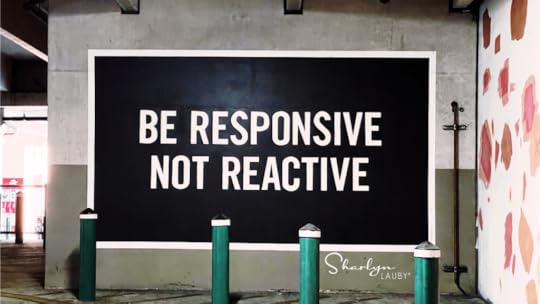
Estimated reading time: 3 minutes
Training should be a key component in an organization’s recruiting strategy. I know that might sound counterintuitive, but I hope you’ll read on.
Organizations aren’t always going to be able to hire someone who has all the knowledge, skills, and experience they’re looking for. This isn’t just the case right now when the recruiting market is challenging. It’s always been the case. So, organizations should be prepared to hire someone and plan to provide training to give them the knowledge, skills, and experience they’re missing.
Same is true for current employees. It’s possible that the organization has a great employee that they want to move into a position of greater responsibility and the employee doesn’t have all the knowledge, skills, and experience necessary. So, the organization puts together a plan to give the employee what they need to be successful.
I heard a lot about training – specifically upskilling and reskilling – at this year’s SHRM Talent conference. But one of the things that I didn’t hear was how employees need to be a part of upskilling and reskilling conversations. They need to be an equal partner and buy-into their training and development.
Just as a reminder, I like to define upskilling as giving employees new knowledge, skills, and experience for the jobs they have today. Reskilling is giving employees knowledge, skills, and experience for future opportunities. Both involve new knowledge, skills, and experience but one is more focused on today and the other is on the future.
Upskilling and reskilling are investments in talent. They send the message to the employee that they matter and are being set up for career success. But the employee needs to be a part of the conversation.
Make sure the employee understands that upskilling and reskilling aren’t because they’re not performing well. There’s a difference between coaching an employee who needs to perform to standard and upskilling/reskilling. Organizations change all the time. The business world is changing as I’m typing this. That means new ways of getting things done. Upskilling and reskilling are about making sure employees can continue performing well as changes happen.
Give employees an opportunity to share how and when they like to learn. Upskilling and reskilling can happen many different ways. If we want employees to buy-into the change, let them be a part of making a few of the decisions. Some employees like to learn by reading. Others by doing. Some employees might say that they learn better in the morning. Others might ask to take a class over their lunch break. Organizations can use employee feedback to gain support and be successful.
Solicit feedback from employees about the upskilling and reskilling experience. Especially if the organization is new to this type of learning. For example, maybe the employee is taking a course via a MOOC (massive open online course). Let the employee know that they’re one of the first employees who will be attending, and you’d like to get their feedback about the program. Managers can also ask employees for feedback during one-on-one meetings. Or HR can put together a focus group.
One of the best strategies that organizations have for attracting, engaging, and retaining the best employees is learning. Let candidates know the organization places a value on learning. Bring employees into the conversation so they know why they’re learning something. And ask them to commit to the process. That way, everyone gets what they want – better performance.
Image captured by Sharlyn Lauby while exploring the streets of Gainesville, FL
The post Upskilling and Reskilling: Organizations and Employees are Both Responsible appeared first on hr bartender.





Sharlyn J. Lauby's Blog
- Sharlyn J. Lauby's profile
- 10 followers



